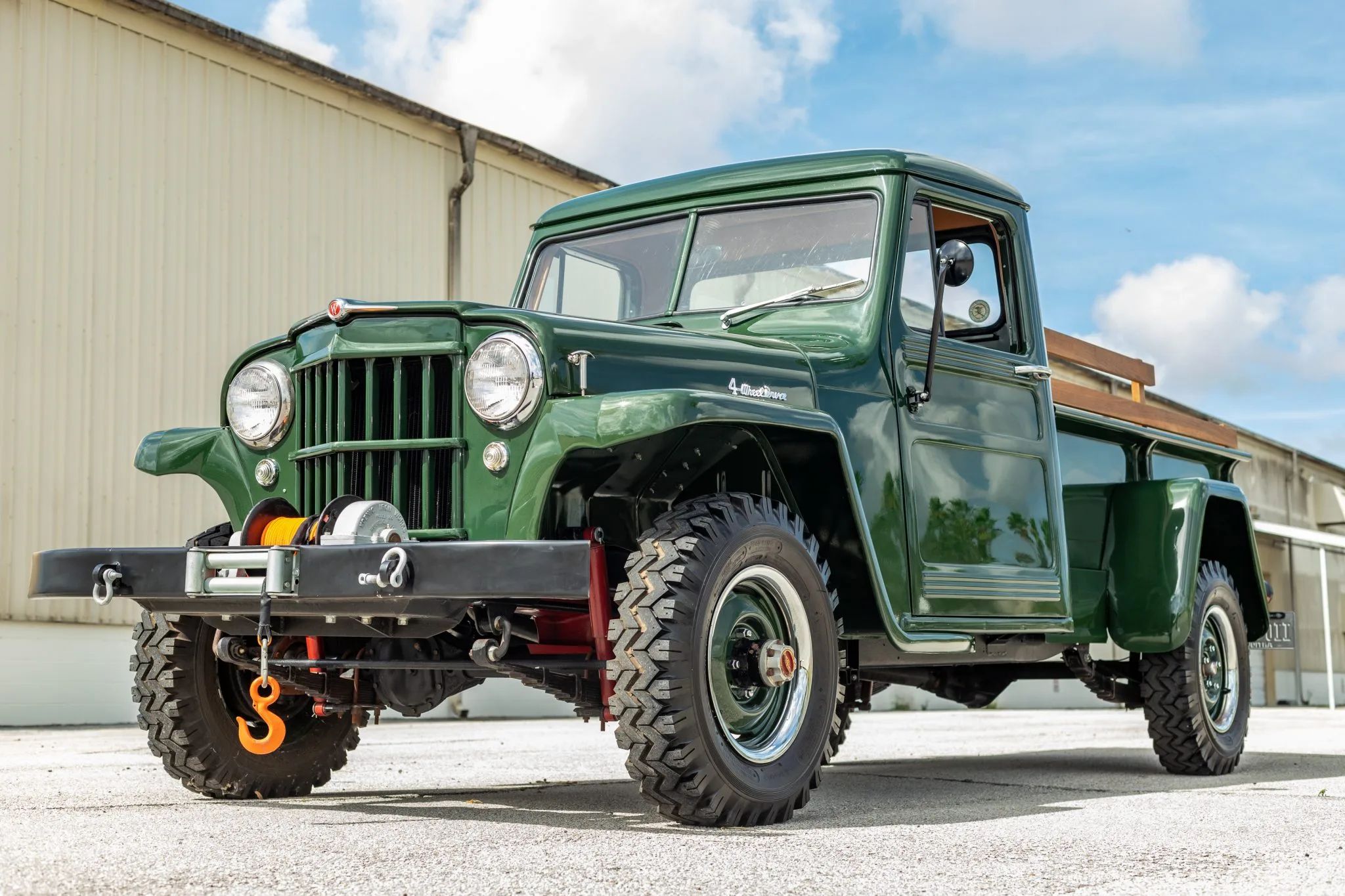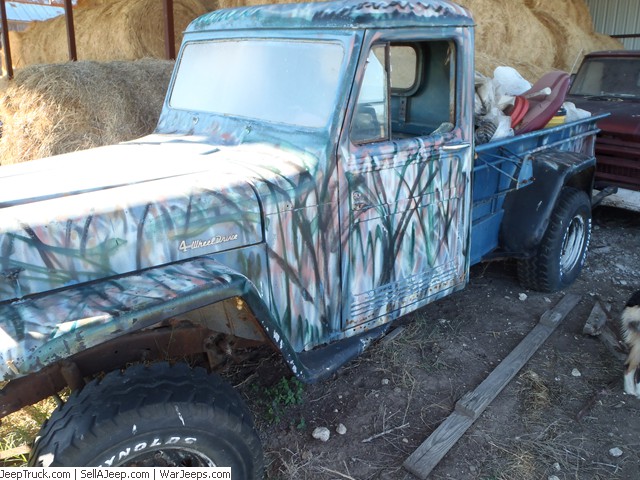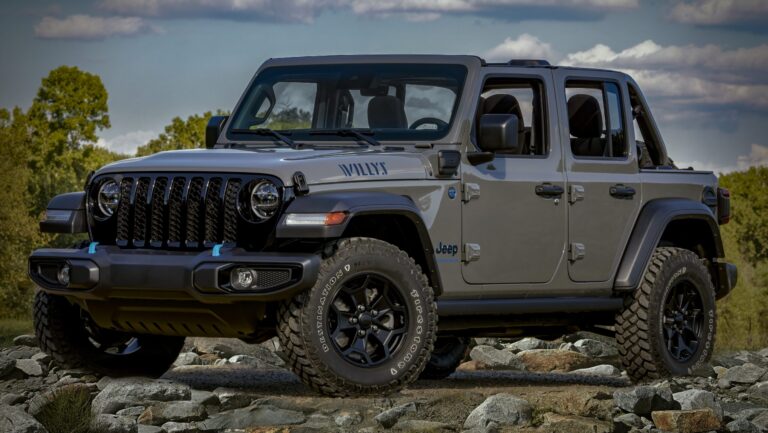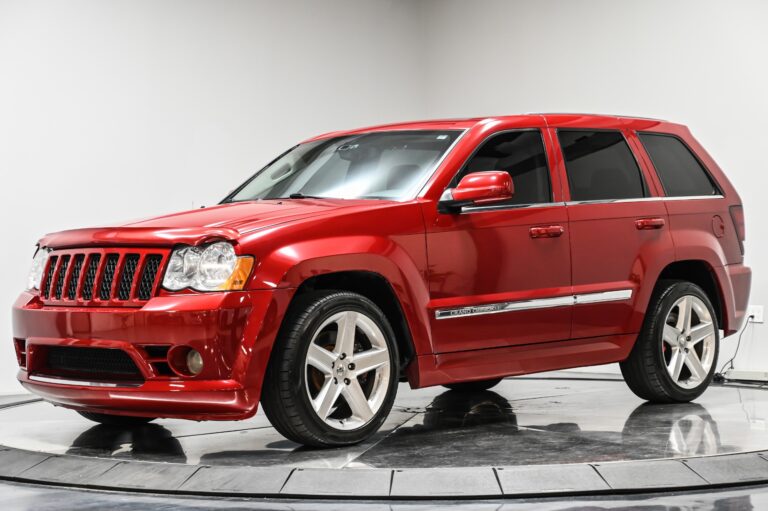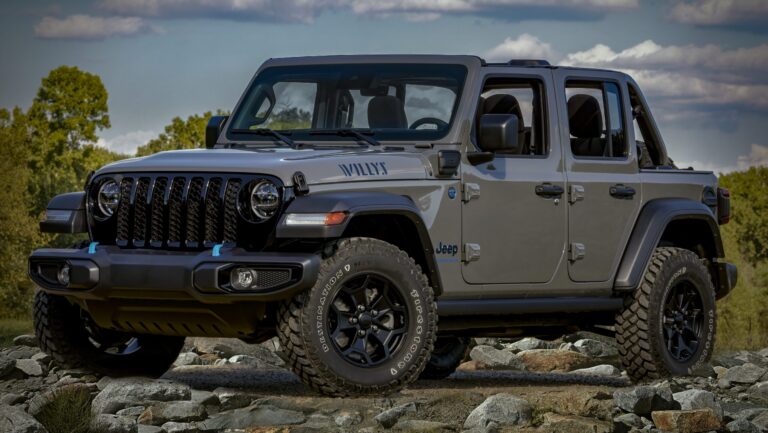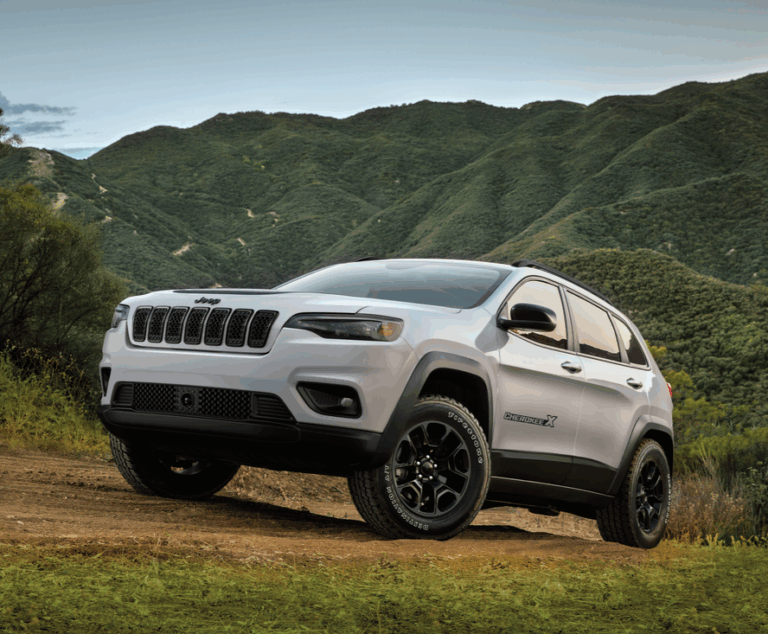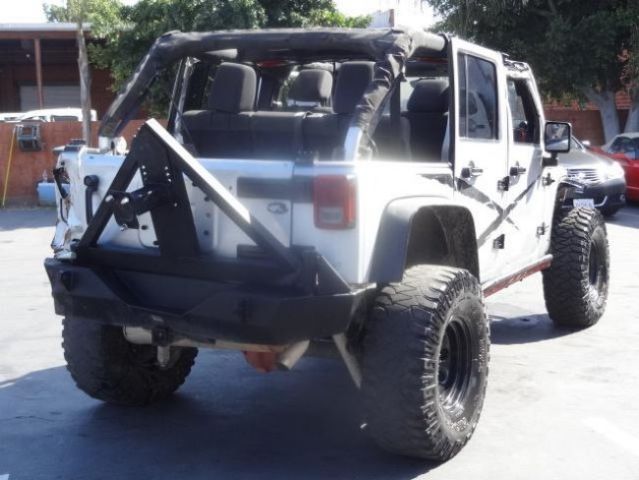1947 Willys Jeep Truck For Sale: A Comprehensive Buyer’s Guide
1947 Willys Jeep Truck For Sale: A Comprehensive Buyer’s Guide jeeps.truckstrend.com
Introduction: Embarking on a Post-War Automotive Adventure
The year 1947 marked a pivotal moment in American automotive history. World War II had concluded, and the ingenuity that forged victory was now channeled into civilian innovation. Among the most iconic vehicles to emerge from this era was the Willys Jeep Truck, a direct descendant of the legendary military Willys MB. More than just a utility vehicle, the 1947 Willys Jeep Truck represents a unique blend of rugged durability, utilitarian design, and undeniable historical charm. For enthusiasts and collectors, finding a 1947 Willys Jeep Truck for sale isn’t just about acquiring a vehicle; it’s about owning a piece of American heritage, a testament to post-war resilience and the birth of the civilian four-wheel-drive market. This comprehensive guide aims to equip prospective buyers with the knowledge and insights needed to navigate the exciting journey of finding, evaluating, and ultimately owning one of these timeless machines.
1947 Willys Jeep Truck For Sale: A Comprehensive Buyer’s Guide
The Legacy of the Willys Jeep Truck: From Battlefield to Farm Field
After producing over 360,000 military Jeeps during WWII, Willys-Overland was uniquely positioned to transition its battle-proven design into the civilian market. The Universal Jeep (CJ-2A) was an immediate success, but Willys recognized the need for a more versatile, load-carrying platform. Thus, the Willys Jeep Truck was born in 1947, sharing the familiar flat-fendered front end and rugged chassis with its CJ brethren, but extending it into a full-fledged pickup.
The 1947 model was powered by Willys’ robust "Go-Devil" L-head 134 cubic inch four-cylinder engine, renowned for its simplicity and reliability. It typically featured a three-speed manual transmission and a two-speed transfer case, offering both two-wheel-drive for road use and a capable four-wheel-drive system for off-road or heavy-duty work. Its no-frills design, combined with a reputation for being nearly indestructible, made it an instant hit with farmers, tradesmen, and anyone needing a reliable workhorse. Over the years, these trucks served countless purposes, from hauling crops and tools to exploring unpaved roads. Today, their iconic grille, simple lines, and historical significance make them highly sought-after collector items, appealing to those who appreciate their utilitarian beauty and the story they tell.
What to Look For When Buying a 1947 Willys Jeep Truck
Acquiring a classic vehicle like a 1947 Willys Jeep Truck requires a keen eye and a methodical approach. Given their age and intended use, most will have stories—and wear—to tell. Here’s a detailed breakdown of critical areas to inspect:
1. Condition of the Body and Frame
Rust is the primary enemy of any vintage vehicle, and Willys trucks are no exception. Pay close attention to the frame rails, body mounts, floorboards, bed, cab corners, and fenders. Look for obvious perforations, amateur patch jobs, or excessive bondo. The frame should be straight, free from major cracks, and show no signs of severe collision damage. Minor surface rust is manageable, but structural integrity is paramount.
2. Engine and Drivetrain
The "Go-Devil" engine is a relatively simple and durable unit. Check for oil leaks around the engine and transmission seals. Listen for unusual noises (knocks, rattles) during startup and operation. Ensure the engine starts easily, idles smoothly, and does not produce excessive smoke. Test the transmission for smooth shifts and ensure the transfer case engages both high and low range, as well as 2WD and 4WD. Check the axles for leaks and listen for grinding or whining noises.
3. Electrical System
The 6-volt electrical system can be a source of frustration if not properly maintained. Check that all lights (headlights, tail lights, turn signals if added) work. Test the horn, wipers, and gauges (fuel, oil pressure, temperature, amp meter). Look for frayed wires, aftermarket wiring, or evidence of poor electrical repairs. Many owners convert these to 12-volt systems for easier starting and accessory compatibility, which isn’t necessarily a negative if done correctly.
4. Brakes and Steering
Safety first! Test the brakes for firm pedal feel and effective stopping power. Pulling to one side or a spongy pedal indicates issues with wheel cylinders, master cylinder, or brake lines. Inspect brake lines for rust or damage. Check the steering for excessive play in the steering wheel, which could indicate wear in the steering box, tie rod ends, or kingpins.
5. Interior and Trim
While minimalist, the interior should be reasonably intact. Check the condition of the seats (original frames are good, but upholstery is often replaced), dashboard, and gauges. Ensure all glass (windshield, rear window, door glass) is free of major cracks or delamination. Look for missing knobs, handles, or trim pieces, as these can be challenging to source.
6. Documentation
A clean title is essential. Ideally, the truck should come with some history, such as old registrations, service records, or photos. This can help verify mileage (though often unreliable on older vehicles) and ownership history, adding to its provenance and value.
Restoration vs. Preservation: Your Buying Strategy
When considering a 1947 Willys Jeep Truck for sale, you’ll encounter vehicles in varying states of condition. Your budget, mechanical aptitude, and ultimate goals for the truck will dictate which category is right for you.
- Fully Restored (Show Quality): These trucks have typically undergone a meticulous, often frame-off restoration, bringing them back to (or exceeding) original factory specifications. They are ready to drive, show, and enjoy immediately.
- Pros: Turn-key, visually stunning, highest resale value, less immediate work.
- Cons: Highest purchase price, may be too "nice" for heavy utility work.
- Running Project (Driver Quality): These vehicles are typically roadworthy and functional but show signs of age, wear, or minor mechanical issues. They might have older paint, some rust, or require ongoing maintenance and upgrades.
- Pros: More affordable entry point, allows for personalized restoration over time, can be enjoyed immediately.
- Cons: Requires time, effort, and potentially significant financial investment for full restoration.
- Non-Runner / Parts Truck: These trucks are typically in very poor condition, often incomplete, and not roadworthy. They may be suitable for a complete ground-up restoration for experienced individuals or as a source of rare parts.
- Pros: Lowest initial purchase price, valuable for specific hard-to-find components.
- Cons: Requires immense mechanical skill, significant financial outlay, and extensive time commitment to make roadworthy.
Where to Find a 1947 Willys Jeep Truck For Sale
Finding the right Willys Jeep Truck requires patience and searching in the right places:
- Online Marketplaces: Websites like eBay Motors, Hemmings, ClassicCars.com, Bring a Trailer, and specific Willys forums/classifieds are excellent starting points.
- Classic Car Dealers: Specialized dealerships often have restored or well-preserved examples, though prices may be higher due to their markup and vetting process.
- Auctions: Live and online auctions (e.g., Mecum, Barrett-Jackson for higher-end, local auctions for projects) can yield finds, but pre-inspection is crucial.
- Willys & Jeep Clubs/Forums: Enthusiast communities are invaluable resources. Members often sell vehicles directly, and you can tap into collective knowledge.
- Word-of-Mouth & Local Ads: Don’t underestimate local classifieds, farm sales, or simply asking around in rural areas where these trucks often spent their lives.
Important Considerations Before Purchase
Before committing to a purchase, reflect on these crucial aspects:
- Budget: Beyond the purchase price, factor in potential restoration costs, parts, specialized tools, and ongoing maintenance.
- Purpose: Will it be a show vehicle, a weekend cruiser, a working farm truck, or an off-road toy? This will influence the level of restoration needed and features desired.
- Parts Availability: While many mechanical parts are still available or reproducible, specific body panels, interior trim, and unique Willys components can be scarce and expensive.
- Mechanical Aptitude: Are you capable of performing repairs and maintenance yourself, or will you rely on a specialized mechanic? Finding experienced mechanics for these older vehicles can be challenging.
- Storage: These trucks are not small. Ensure you have adequate, secure, and weather-protected storage.
- Insurance: Look into classic car insurance providers, as they often offer better rates and specialized coverage for vintage vehicles.
Owning and Maintaining Your Classic Willys Truck
Owning a 1947 Willys Jeep Truck is a rewarding experience, but it comes with responsibilities. Regular maintenance is key to longevity. This includes frequent oil changes, checking fluid levels, lubricating chassis points, and inspecting brakes. Common issues include rust (ongoing battle), carburetor tuning, 6-volt electrical quirks, and driveline wear. Join Willys clubs and online forums; these communities offer invaluable advice, troubleshooting tips, and sources for parts. Embrace the simplicity and mechanical nature of the truck – it’s part of its charm. Learning to do basic repairs yourself will not only save money but also deepen your appreciation for this iconic machine.
Estimated Price Guide for a 1947 Willys Jeep Truck For Sale
Please note that these are approximate ranges and can vary significantly based on location, originality, documentation, and market demand.
| Condition Category | Description | Estimated Price Range (USD) |
|---|---|---|
| Parts Truck | Non-running, heavily rusted, incomplete, or severely damaged. Suitable only for parts or a complete, dedicated frame-off restoration by an expert. | $2,000 – $7,000 |
| Running Project | Runs and drives, but needs significant mechanical work, bodywork, interior refresh, or a full repaint. Functional but far from perfect. May have some rust issues. | $7,000 – $18,000 |
| Driver Quality | Mostly complete and functional. Can be driven regularly with minor issues. May have older repaint, some wear and tear, but generally solid. Not show-quality, but presentable and reliable. | $18,000 – $35,000 |
| Restored | Professionally restored to a high standard, but not necessarily concourse. Excellent paint, solid body, fully functional mechanicals. May have some minor flaws visible upon close inspection. | $35,000 – $55,000 |
| Show/Concourse | Meticulously restored to original factory specifications or better. Frame-off restoration, perfect paint, original or period-correct components, highly detailed. Often award-winning. | $55,000+ |
Frequently Asked Questions (FAQ)
Q1: Are parts readily available for a 1947 Willys Jeep Truck?
A1: Many mechanical parts (engine components, transmission parts, brake parts) are still available through specialty suppliers or aftermarket manufacturers. Body panels and specific trim pieces can be harder to find and may require fabrication or sourcing from donor vehicles.
Q2: Can a 1947 Willys Jeep Truck be a daily driver?
A2: While technically possible, it’s generally not recommended for modern daily driving. They lack modern safety features, are slow by today’s standards, and require more frequent maintenance. They are best suited for weekend cruises, local errands, or off-road adventures.
Q3: What kind of fuel does a 1947 Willys Jeep Truck use?
A3: The original "Go-Devil" engine was designed for leaded gasoline. Modern unleaded gasoline is acceptable, but it’s often recommended to use a lead substitute additive or an ethanol-free fuel to protect valve seats and fuel system components.
Q4: Is it expensive to insure a classic Willys Truck?
A4: Typically, no. Classic car insurance policies are often very affordable because these vehicles are driven less frequently and owners tend to be more careful. Ensure you get an "agreed value" policy that covers the vehicle’s appraised value, not just its market value.
Q5: What’s the typical fuel economy (MPG) of a 1947 Willys Jeep Truck?
A5: Fuel economy is not a strong suit. Expect anywhere from 10-15 miles per gallon, depending on driving conditions, vehicle tuning, and whether 2WD or 4WD is engaged.
Q6: Are there common rust spots on these trucks?
A6: Yes, common rust areas include the floorboards, bed, cab corners, lower fenders, rocker panels, and the frame where mud and moisture can accumulate. Inspect these areas thoroughly.
Conclusion: A Timeless Piece of Americana
The 1947 Willys Jeep Truck stands as a powerful symbol of post-war American resilience and ingenuity. More than just a vintage vehicle, it represents a pioneering spirit, a no-nonsense approach to utility, and a direct link to the foundational legacy of the Jeep brand. Whether you’re seeking a meticulously restored showpiece or a rewarding project, the journey of acquiring one of these trucks is an adventure in itself. By understanding their unique characteristics, knowing what to look for, and preparing for the joys and challenges of ownership, you can confidently embark on the path to becoming the proud owner of a truly timeless piece of American automotive history. The roar of that Go-Devil engine and the rugged charm of its design promise a driving experience unlike any other, connecting you to an era when vehicles were built to work and to last.
